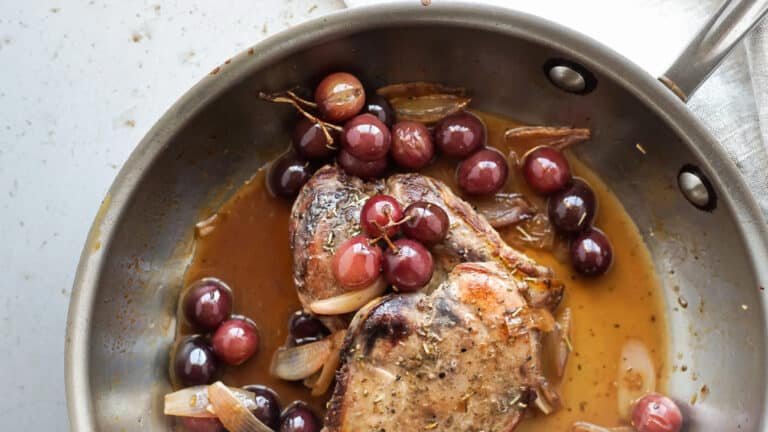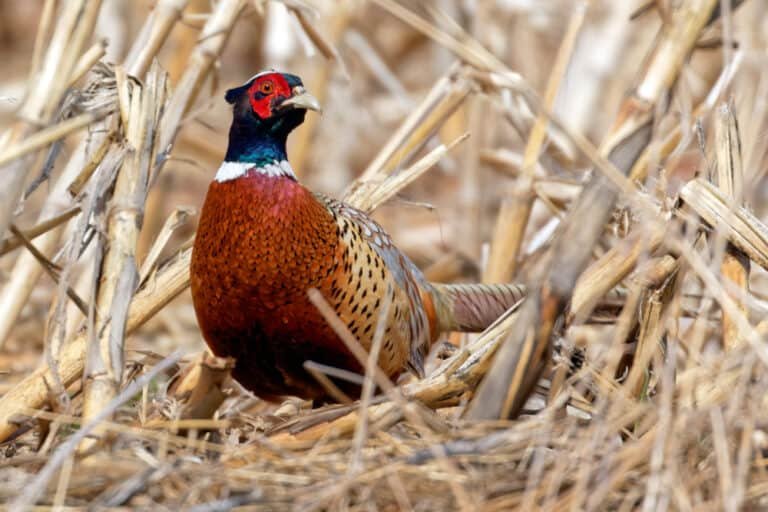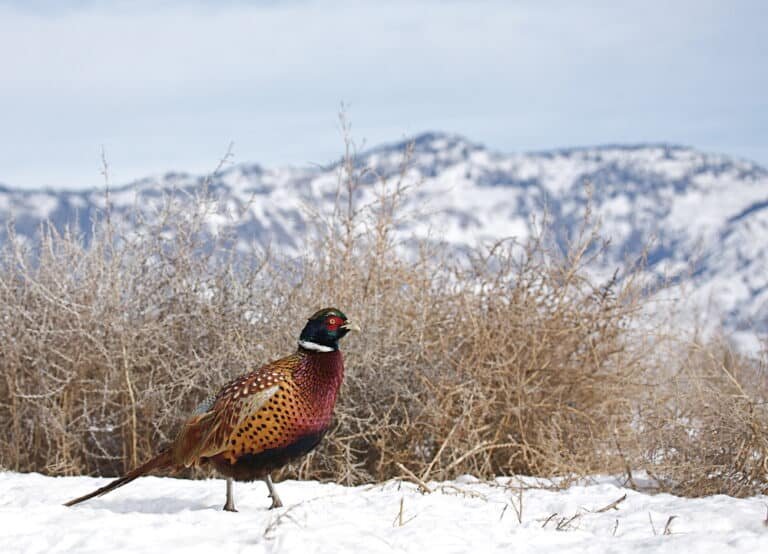Pheasant Hunting Oregon: Everything You Need to Know!
Pheasant hunting is an exhilarating outdoor pursuit that combines the thrill of the chase, the precision of marksmanship, and a deep appreciation for the natural world. It is a popular sport enjoyed by hunters around the globe, seeking not only to test their skills but also to immerse themselves in the beauty of nature. Let’s delve into pheasant hunting Oregon.
With its diverse landscapes and abundant wildlife, Oregon has emerged as one of the most sought-after destinations for pheasant hunting enthusiasts. Let’s talk pheasant hunting Oregon!
Oregon Hunting Season Dates – Rooster Pheasant
Dates: Oct 14 — Dec 31 Daily Bag Limit: 2 Possession Limit: 8
Definition of Pheasant Hunting
Pheasant hunting can be defined as a recreational activity in which hunters pursue and harvest wild pheasants for sport or sustenance. Pheasants are colorful game birds from the Phasianidae family, renowned for their striking plumage and swift flight.
These birds possess exceptional agility and can reach speeds up to 60 miles per hour when flushed from cover. The challenge lies in locating and pursuing these elusive creatures amidst various terrains – from open grasslands to dense shrubbery.
Overview of Oregon as a Popular Pheasant Hunting Destination
Oregon has earned its reputation as an exceptional pheasant hunting destination due to its favorable habitat conditions and well-managed wildlife populations.
With vast expanses of agricultural lands interspersed with wetlands, grassy fields, and riparian corridors, hunters find themselves immersed in prime pheasant habitat.
The state’s commitment to conservation ensures that suitable environments are maintained for these game birds throughout their range. Furthermore, Oregon’s rich natural diversity offers an array of opportunities that cater to novice hunters seeking introductory experiences and seasoned athletes looking for challenging pursuits.
In recent years, Oregon has witnessed a surge in popularity among pheasant hunting enthusiasts due to its picturesque landscapes combined with ample access opportunities provided by public lands such as national wildlife refuges, wildlife management areas, and state parks.
These areas often offer managed hunting programs that allow individuals to engage in legal and regulated hunting activities while preserving the delicate balance between wildlife conservation and recreational pursuit.
Whether one seeks solitary adventures amidst serene grasslands or the camaraderie of joining guided hunts, Oregon’s pheasant hunting scene provides a wealth of opportunities for every type of hunter. From novice to expert, all hunters can revel in the thrill of the chase while exploring the untamed corners of this magnificent state.
History of Pheasant Hunting in Oregon
Early Introduction of Pheasants to Oregon
Pheasant hunting in Oregon has a fascinating history from the early 1900s. It all began with introducing Chinese ring-necked pheasants (Phasianus colchicus) to the fertile lands of the Willamette Valley.
These vibrant, beautiful birds were brought over from China and Eastern Asia, specifically for their suitability as game birds. The primary motivation behind this introduction was to establish a new hunting opportunity and enhance biodiversity in Oregon’s wildlife populations.
Establishment of Pheasant Hunting Seasons and Regulations
As pheasant populations steadily grew and spread across various regions of Oregon, state authorities recognized the need for proper management and regulation.
In 1925, the Oregon Game Commission established the first official pheasant hunting season in response to mounting interest from hunters. This marked a significant milestone in recognizing pheasant hunting as a legitimate sport within the state.
Over time, regulations were refined and adapted to ensure sustainable harvests while preserving breeders for future generations, and establishing bag limits, licensing requirements, season dates, and specific areas designated for pheasant hunting allowed for better control and conservation efforts.
Strict enforcement measures were also implemented to prevent over-harvesting or poaching that could harm pheasant populations and their habitat. Today, these historical milestones continue to shape pheasant hunting practices in Oregon by striking a delicate balance between avid hunters’ passion for sport and conservation efforts to maintain healthy population levels.
Description of Ideal Habitat for Pheasants
When it comes to pheasant hunting in Oregon, understanding the ideal habitat for these magnificent birds is crucial. Pheasants thrive in various habitats but are particularly fond of areas that combine essential elements.
Firstly, they prefer open landscapes with grasslands, agricultural fields, and shrubby cover. This diverse environment provides pheasants with ample food sources, such as grains and seeds, and suitable nesting and roosting sites.
Moreover, water sources like ponds or streams significantly attract pheasants as they require water for drinking and bathing. Additionally, dense cover like tall grasses or brushy areas offers protection from predators and adverse weather conditions.
Geographic Distribution and Range of Pheasants in Oregon
Pheasant populations vary across different regions of Oregon due to several factors, including climate conditions, agricultural practices, and habitat availability. The most significant concentrations can be found in the eastern part of the state, where vast expanses of farmland intermingle with natural grasslands and riparian areas along rivers.
Counties such as Umatilla, Morrow, Union, and Malheur are renowned for their excellent pheasant populations due to the abundance of suitable habitats.
However, pheasants can also be found in pockets throughout other parts of Oregon where appropriate conditions exist. Counties like Marion and Clatsop have seen successful introductions through habitat restoration efforts on public lands like wildlife refuges or managed hunting areas.
Understanding both the ideal habitat requirements for pheasants and their geographic distribution within Oregon’s diverse landscape allows hunters to target areas where their chances for success are maximized.
By seeking out locations that offer a combination of open landscapes with ample food sources and dense cover while considering the distribution patterns of pheasant populations throughout the state, hunters can embark on a truly rewarding and fruitful pheasant hunting experience in Oregon.
Popular Pheasant Hunting Locations in Oregon
Malheur National Wildlife Refuge: An Untamed Paradise for Avid Hunters
The Malheur National Wildlife Refuge is a haven for pheasant hunting enthusiasts in southeastern Oregon. Spanning over 187,000 acres of diverse habitats, this refuge offers a rich tapestry of wetlands, marshes, and upland fields that serve as prime pheasant habitat.
With its vast open spaces and picturesque landscapes, the refuge provides an unparalleled backdrop for an unforgettable hunting experience. The abundance of food sources and shelter available to these game birds within the refuge ensures impressive opportunities for hunters seeking their elusive prey.
Description and Features of the Refuge
The Malheur National Wildlife Refuge boasts an extensive network of waterways that provide essential resources to a wide variety of wildlife species in addition to pheasants. These wetlands attract migratory birds such as waterfowl and shorebirds while catering to resident populations like cranes and herons.
The lush vegetation surrounding these water bodies creates an ideal environment for pheasants to find cover and feed on seeds, grains, insects, and small vertebrates. Furthermore, the refuge’s diverse landscape offers excellent hunting grounds and scenic beauty that enchants visitors with its untouched natural splendor.
Availability and Accessibility for Hunters
Pheasant hunters can rejoice in their ability to access portions of the Malheur National Wildlife Refuge exclusively designated for their pursuit. Managed by the U.S. Fish and Wildlife Service (USFWS), specific areas within the refuge are opened seasonally for regulated hunting activities. To ensure a sustainable harvest while protecting wildlife populations, licenses and adhering to bag limits set by state regulations are required.
Additionally, hunter education courses may be mandatory depending on age and experience level. By adhering to these guidelines, hunters can relish the opportunity to explore the refuge’s vast expanse and immerse themselves in a truly remarkable pheasant hunting experience.
Sauvie Island Wildlife Area
Where Nature's Bounty Meets Hunting Excellence
Situated just outside of Portland, Oregon, Sauvie Island is a treasure trove of natural beauty and an ideal destination for pheasant hunting. This expansive island encompasses over 26,000 acres of farmland, marshes, woodlands, and riverbanks. It offers a unique blend of ecosystems that sustains various wildlife species, including pheasants.
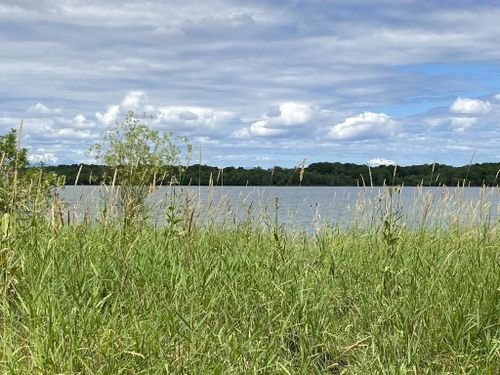
Overview of the Island’s Unique Ecosystem
Sauvie Island’s diverse ecosystem provides pheasants with abundant food sources and suitable habitats throughout the year. Fields cultivated with crops like corn, wheat, and sorghum offer prime foraging grounds for these game birds.
Additionally, wetlands and marshes dotting the island provide nesting areas and attract waterfowl, often sharing habitats with pheasants. The island’s mix of forested areas adds another layer to its allure as it offers a protective cover for wildlife during harsh weather conditions or when predators lurk nearby.
Regulations and Guidelines for Hunting on Sauvie Island
To ensure responsible hunting practices while preserving this precious ecosystem, regulations are in place within the Sauvie Island Wildlife Area. Hunters must obtain appropriate licenses from the Oregon Department of Fish & Wildlife (ODFW) before venturing onto designated hunting grounds. Bag limits are established seasonally to maintain sustainable populations while providing ample opportunities for successful hunts.
Moreover, specific areas may have additional guidelines to protect sensitive habitats or ensure public safety. By adhering to these regulations, hunters can relish the unique experience of pheasant hunting on Sauvie Island while being stewards of the island’s delicate balance between nature and human interaction.
Strategies for Successful Pheasant Hunting in Oregon
Selection and Preparation of Equipment
To embark on a successful pheasant hunting expedition in Oregon, one must equip oneself with the appropriate tools. When selecting a shotgun, choose one with a gauge suitable for pheasant hunting, such as 12 or 20 gauge. Consider factors like weight, barrel length, and choke options based on personal preference and shooting style.
Equally important is ammunition selection; opt for shells with appropriate shot sizes, typically from #4 to #6. Wear earth-toned attire that provides adequate camouflage and blends well with the environment.
Invest in quality boots that provide ankle support and are comfortable enough for long walks through fields or marshes. In terms of safety precautions, always ensure your firearm is properly maintained.
Regularly clean and oil your shotgun to prevent malfunctions while in the field. Prioritize safety by strictly following fundamental firearm handling rules: always point the muzzle in a safe direction, keep your finger off the trigger until ready to shoot, and know your target and what lies beyond it.
Pre-hunt Planning
Before heading out on your pheasant hunting adventure in Oregon, meticulous prehunt planning is vital for success. Study maps of potential hunting areas to identify prime locations where pheasants are likely to be found—focus on areas offering suitable cover, such as grasslands, crop fields, or shrubbery patches adjacent to larger open areas. Familiarize yourself with local regulations regarding bag limits, licensing requirements, and specific season dates.
It’s essential to respect these guidelines established by wildlife management authorities. Additionally, please pay close attention to weather conditions as they greatly influence bird behavior during different times or seasons.
Knowing the terrain’s topography can also be advantageous in mapping out hunting strategies. Identifying areas with natural funnels or choke points where pheasants might be forced to pass through can improve your chances of a successful hunt.
Field Tactics
Regarding pheasant hunting in Oregon, understanding and employing effective field tactics is key. The choice between walking or stationary hunts depends on personal preference and the terrain being hunted.
Walking hunts involve covering more ground, flushing birds out of cover, and pursuing them as they take flight. This method requires patience, stamina, and the ability to move stealthily through thick vegetation without startling the birds.
On the other hand, stationary hunts involve strategically positioning oneself near known feeding or resting areas for pheasants. It requires careful observation and patience as you wait for birds to approach or flush them out by utilizing well-trained dogs.
Speaking of dogs, they play a crucial role in many successful pheasant hunts in Oregon. Well-trained retrievers or pointers can assist in locating downed birds and retrieve them reliably without causing unnecessary damage.
Shooting Techniques
Mastering proper shooting techniques is essential to increase your chances of hitting your target when pheasant hunting in Oregon. Start by adopting a firm but comfortable stance—a slightly crouched position with weight evenly distributed on both feet provides stability while allowing swift maneuverability if needed.
Please focus on the bird as it takes flight, and bring your shotgun up smoothly to align with its path. Aim just ahead of the bird’s beak to compensate for its forward motion—leading the target—to ensure effective hits.
As you squeeze the trigger, maintain follow-through by continuing to swing smoothly after firing to maximize accuracy, even during fast-paced shooting scenarios. By honing these shooting techniques through regular practice and experience, you will gradually enhance your marksmanship skills when engaging in exhilarating pheasant hunts across Oregon’s diverse landscapes.
Organizations Supporting Pheasant Hunting Oregon
Preservation Efforts for Pheasants
Oregon recognizes the significance of preserving pheasant populations and their natural habitats. Several preservation efforts have ensured these majestic birds’ long-term survival. One such initiative is focused on creating and maintaining suitable habitats through land management practices such as controlled burning, reforestation, and wetland restoration.
These measures provide nesting cover, food sources, and protection from predators. Collaboration between landowners, conservation organizations, and government agencies has also established wildlife corridors to facilitate safe migration routes for pheasants.
Organizations Championing Pheasant Hunting Oregon
Various conservation organizations are crucial in supporting pheasant hunting and habitat protection in Oregon. The Oregon Hunters Association (OHA) is at the forefront of advocating for responsible hunting practices while promoting wildlife conservation.
OHA actively ensures sustainable pheasant populations through educational programs, habitat enhancement projects, and lobbying efforts to protect hunting rights. Another notable organization is Pheasants Forever (PF), which operates dedicated chapters across Oregon.
PF focuses on habitat restoration initiatives by partnering with landowners to create valuable sanctuaries where pheasants thrive. Their collaborative efforts involve researching practices for enhancing pheasant habitats while organizing educational events encouraging ethical hunting practices among enthusiasts.
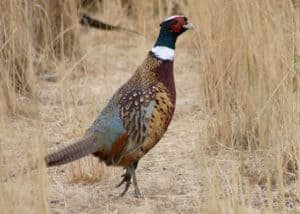
Conclusion – Pheasant Hunting Oregon
Pheasant hunting in Oregon offers a captivating experience for both seasoned hunters and newcomers alike. Abundant preservation efforts combined with active involvement from conservation organizations demonstrate a commitment to protecting these remarkable birds and their habitats for future generations.
As hunters venture into the picturesque landscapes of Oregon’s wildlife refuges and protected areas, they participate in a noble pursuit that enriches their lives and ensures the preservation of these vibrant ecosystems. We can foster a harmonious balance between conservation efforts and the cherished pheasant hunting tradition through responsible hunting practices and collaboration with dedicated organizations.


